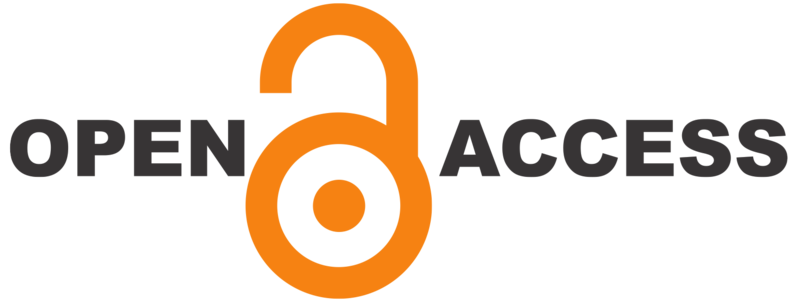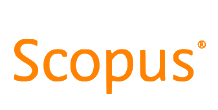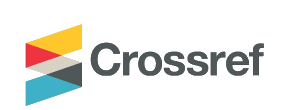Practical steps and collegiality in the building of podiatry curricula to meet accreditation and health sector employability demands
DOI:
https://doi.org/10.21153/jtlge2013vol4no1art561Keywords:
embedding course learning outcomes, graduate outcomes, curriculum design, curriculum mapping, podiatry competency standards, professional accreditationAbstract
Historically, mixed arrangements have been in place between educational institutions and podiatrist registration bodies to evaluate the capacity of programs to adequately prepare new graduates for clinical practice. The national scheme for the registration of health practitioners introduced in 2010, followed by a national system for accreditation of respective programs, has however seen significant legislative and policy change to requirements for evidencing effectiveness of podiatry programs. In addition, there has been a local and international change in emphasis by stakeholders in higher education, government, professional regulation, quality assurance and employment, towards measureable, explicit student learning outcomes. Curricula initiatives at La Trobe University, including large scale systematic review and redesign of all courses within the Faculty of Health Sciences commencing in 2005, and a subsequent university wide ‘Design for Learning’ project (La Trobe University, 2009), provided a timely platform for podiatry staff to respond to critical emerging imperatives for increased program transparency and accountability. The case study presented in this paper provides a practical, in-context explanation of an approach adopted to develop and embed Podiatry Course Learning Outcomes (CLOs). It draws on the podiatry profession’s competency standards and produces aligned curricula (Biggs & Tang, 2007) where fine grain subject Intended Learning Outcomes (ILOs), underpinned by related learning and assessment activities, cumulatively address student development of the CLOs. Systematic and comprehensive documented evidence demonstrates when and how key podiatry competencies are developed, attained and assessed in these podiatry curricula.
Metrics
References
Assessing & Assuring Graduate Learning Outcomes (AAGLO) Project. (2011). AAGLO Summary 3: Challenges of assessing Graduate Learning Outcomes (GLOs) in work-based contexts. Retrieved February 8, 2013, from http://www.itl.usyd.edu.au/projects/aaglo/pdf/AAGLO_Summary%203_Final.pdf
Australian and New Zealand Podiatry Accreditation Council (ANZPAC). (2009a – updated 2012). Australian and New Zealand Podiatry Accreditation Council - Podiatry Competency Standards for Australia and New Zealand. Retrieved October 2, 2013, from http://www.anzpac.org.au/accreditation.html
Australian and New Zealand Podiatry Accreditation Council (ANZPAC). (2009b). Accreditation Standards and Procedures for Podiatry Programs for Australia and New Zealand. Retrieved October 2, 2013, from http://www.anzpac.org.au/accreditation.html
Australian Podiatry Association Victoria. (2012). About podiatrists. Retrieved February 8, 2013, from http://www.podiatryvic.com.au/Podiatrists/Podiatry.htm
Australian Learning and Teaching Council (ALTC). (2011). Learning & Teaching Academic Standards (LTAS) Project Final Report for Architecture, Building, Education & Science. Retrieved February 8, 2013, from http://www.olt.gov.au/resources?text=Learning+and+teaching+academic+standards
Australian Qualifications Advisory Board. (2007). Australian Qualifications Framework Implementation Handbook. (4th Ed). Retrieved February 8, 2013, from http://www.aqf.edu.au/Portals/0/Documents/Handbook/AQF_Handbook_07.pdf
Bath, D., Smith, C., Stein, S. & Swann, R. (2004). Beyond mapping and embedding graduate attributes: Bringing together quality assurance and action learning to create a validated and living curriculum. Higher Education Research & Development, 23(3), 313—328.
Biggs, J. & Tang, C. (2007). Teaching for Quality Learning at University. (3rd ed.). Berkshire, England: McGraw Hill.
Bowden, J., Hart, G., King, B., Trigwell, K. & Watts, O. (2000). Generic Capabilities of ATN University Graduates. Final Report to DETYA, Teaching and Learning Committee, Australian Technology Network.
Brooks, P. (2011). Health workforce issues for podiatry. Journal of Foot and Ankle Research, 4(Suppl 1), I2.
Faculty of Health Sciences 2009. Health Sciences Graduate Attributes Matrix: Developing the attributes. Faculty of Health Sciences Intranet, La Trobe University, viewed 8th February 2013, https://intranet.latrobe.edu.au/health/teaching-and-learning/subjects
Forrester, K. & Griffiths, D. (2011). Essentials of law for medical practitioners. Sydney: Churchill Livingstone.
Harden, R. (2001). AMEE Guide No 21: Curriculum mapping: A tool for transparent and authentic teaching and learning. Medical Teacher, 23(2), 123—137.
Hubball, H. & Burt, H. (2004). An integrated approach to developing and implementing learning-centred curricula. International Journal for Academic Development, 9(1), 51—65.
Jones, S., Dermoudy, J., Hannan, G., James, S., Osborn, J., Yates, B. & Evans, C. (2007). Designing and mapping a generic attributes curriculum for science undergraduate students: A faculty-wide collaborative project. UniServe Science Teaching and Learning Research Proceedings, pp. 40—45.
Kelley, K., Coyle, J., McAuley, J., Wallace, L., Buerki, R. & Frank, S. (2008a). Writing PharmD program-level, ability-based outcomes: Key elements for success. American Journal of Pharmaceutical Education, 72(5):98.
Kelley, K., McAuley, J., Wallace, L. & Frank, S. (2008b). Curricular mapping: Process and product. American Journal of Pharmaceutical Education, 72(5):100.
La Trobe University. (2009). Design for Learning. Curriculum Review and Renewal at La Trobe University. Retrieved February 8, 2013, from http://www.latrobe.edu.au/about/downloads/DFL-booklet.pdf
La Trobe University. (2012). Vision 2015. Retrieved February 8, 2013, from http://www.latrobe.edu.au/about/vision
Oliver, B. (2011). Assuring graduate outcomes. Australian Learning & Teaching Council Good practice report. Retrieved February 8, 2013, from
http://www.olt.gov.au/resource-assuring-graduate-outcomes-curtin-2011
Robley, W., Whittle, S. & Murdoch-Eaton, D. (2005). Mapping generic skills curricula: Outcomes and discussion. Journal of Further and Higher Education, 29(4), 321—330.
Schnock, W. (1989). Annotations to the History of Chiropody-Podiatry in Victoria 1929-1979. Malvern, Victoria, Australia: Walter Schnock.
Spencer, D., Riddle, M. & Knewstubb, B. (2012). Curriculum mapping to embed graduate capabilities. Higher Education Research & Development, 31(2) 217—231.
Sumsion, J. & Goodfellow, J. (2004). Identifying generic skills through curriculum mapping: A critical evaluation. Higher Education Research & Development, 23(3) 329—346.
Tertiary Education Quality Standards Agency (TEQSA). (2011). Developing a framework for teaching and learning standards in Australian Higher Education and the role of TEQSA: Discussion paper. Retrieved February 8, 2013, from http://www.innovation.gov.au/HigherEducation/Policy/TertiaryEducationQualityAndStandardsAgency/Documents/teqsa/Teaching_Learning_Discussion_Paper.pdf
Uchiyama, K. & Radin, J. (2009). Curriculum mapping in higher education: A vehicle for collaboration. Innovative Higher Education, 33, 271—280.











